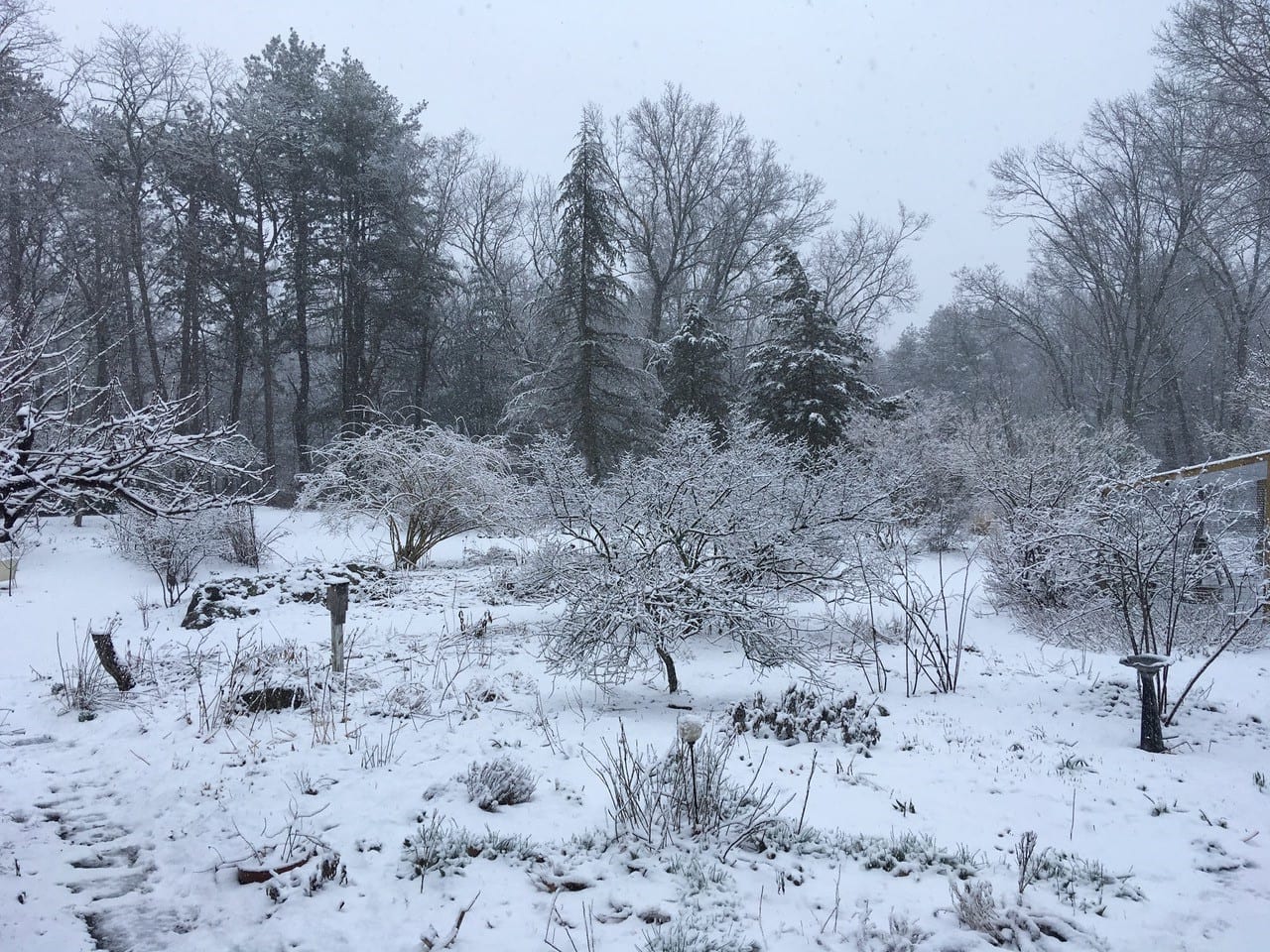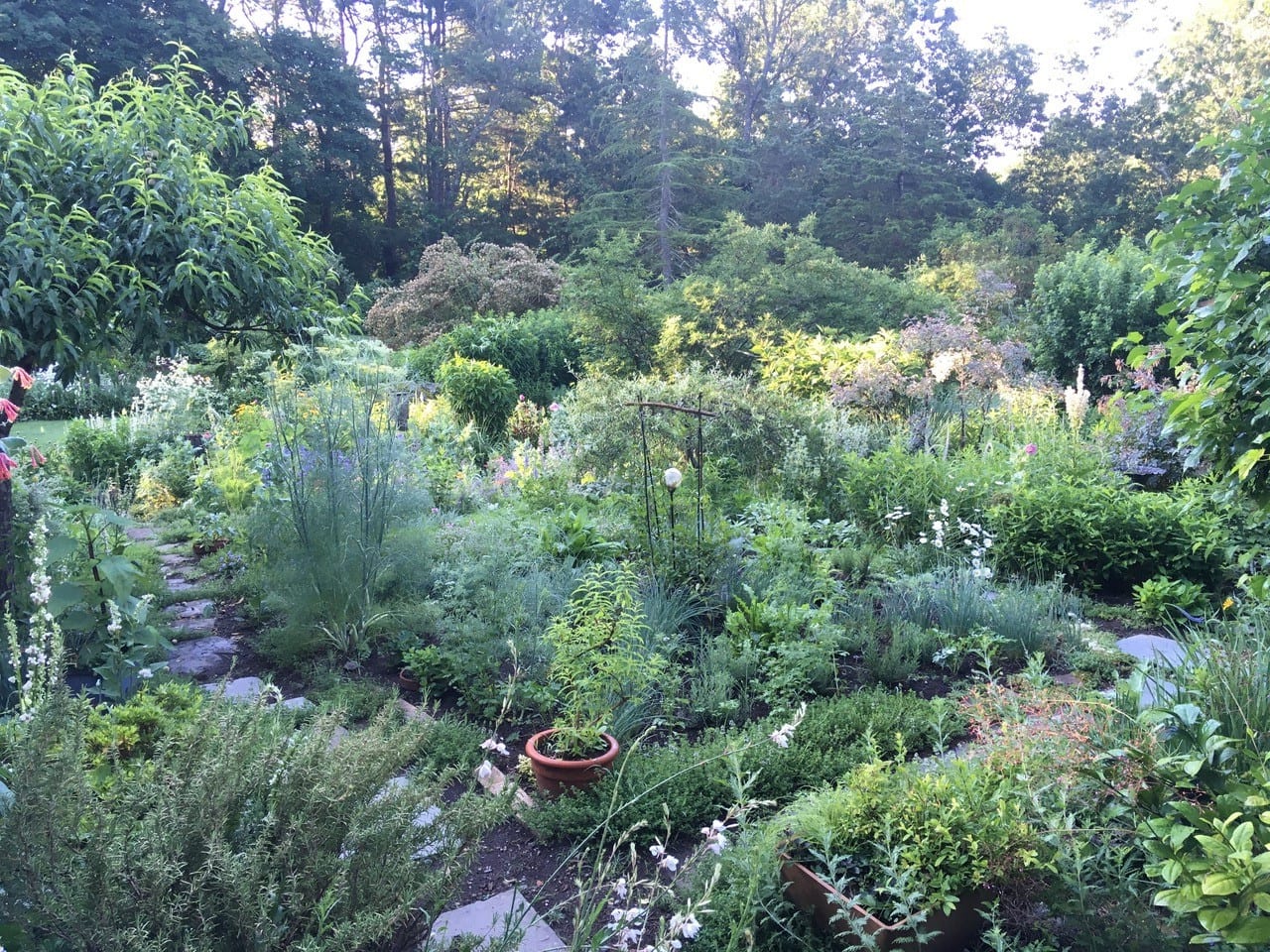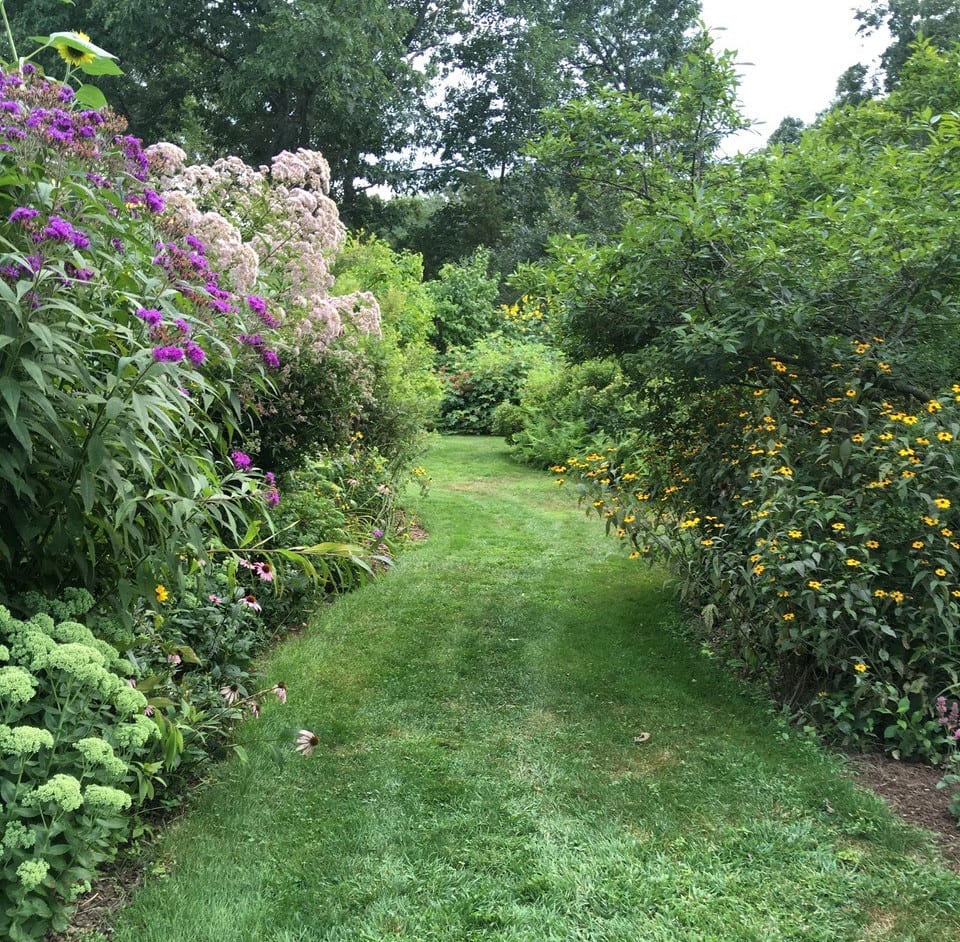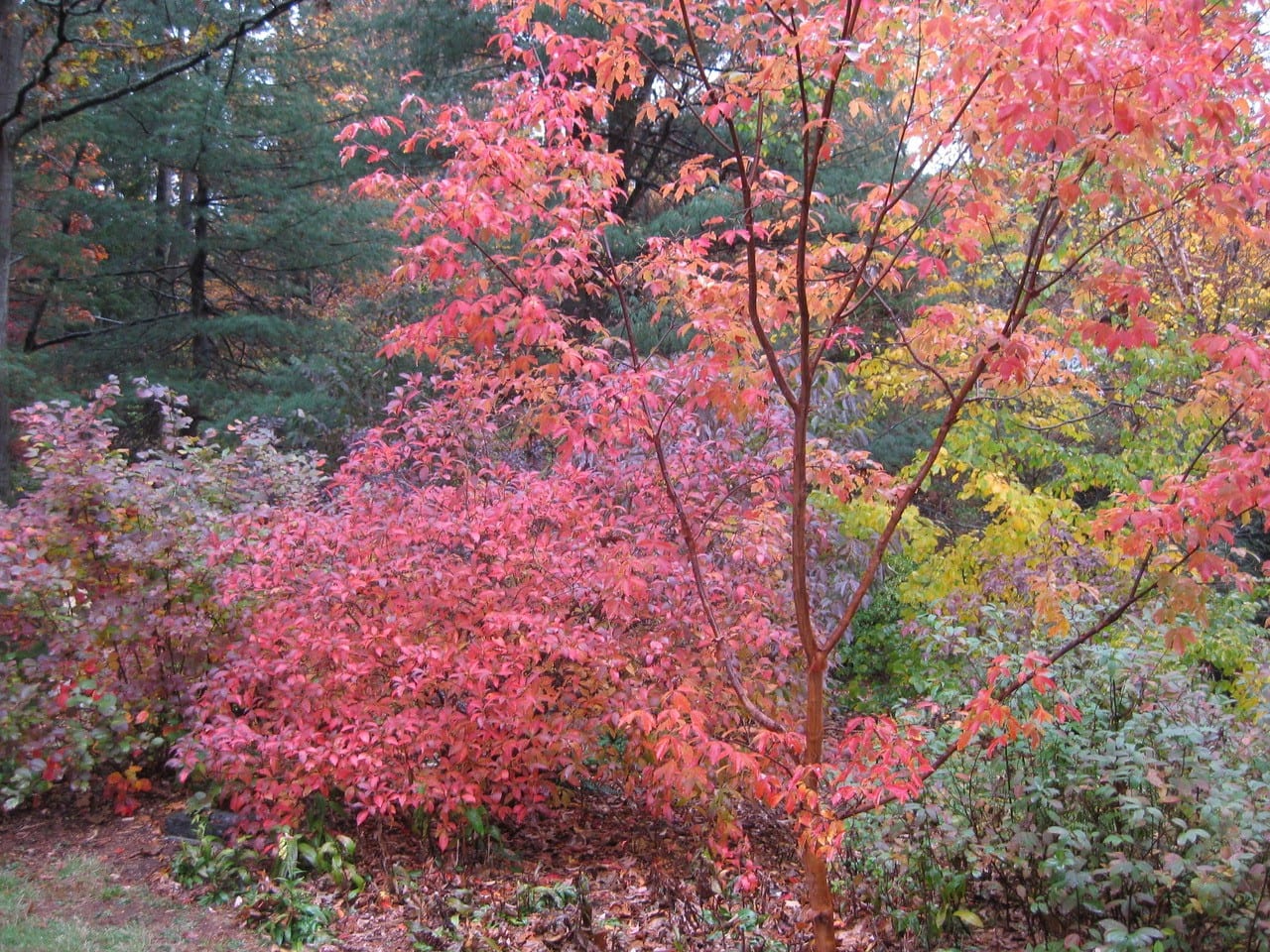Hosted by Robin Wilkerson
We moved to these two acres in Lincoln over 30 years ago. It was an uncultivated and essentially unloved piece of land that had in the 1950s been a small cattle farm, so the soil is very good. It’s been a slow process reclaiming all two acres. The New England Wild Flower Society (now Native Plant Trust) for years taught their invasive classes here. We had virtually all the invasives. We have managed to wrest most of them under control, but it’s an ongoing activity.
Half of our two-acre property is a woodland where I have concentrated primarily on native trees and shrubs, although there are a few trees that reflect my less educated and more enthusiastic youth, for example, a massive Chinese dogwood that I brought home from the Arnold Arboretum plant sale in a 2-inch pot. It is blooming magnificently now and will continue to reach for the skies. I’m told they can get to be 150 feet tall. The understory is yellowwood, sassafras, oxydendron, carpinus, and dozens of other natives that provide a fabulous color palette in the fall.
The sunny side of the garden sports a big vegetable garden – my first love. This year the veggie garden has gotten special attention as I’ve had more time, and I am growing a lot for the neighborhood and our local food pantry. The sunny borders are challenging me at the moment. For years I had what I described as an England cottage/New England farm fusion garden. Now, of course, I am trying to move in the direction of a lot more native and pollinator-friendly plants. It’s challenging to know what to get rid of first…peonies? hollyhocks? Siberian iris? So much is non-native and is not relevant to the local ecology. But all are wonderful plants, so my borders are expanding to include more echinacea, rudbeckia, lobelia, mountain mint, and such. The lawn is shrinking by the hour.
Gardening is such a process. Never completed. Needless to say, I have been utterly grateful to be able to garden the last few months. Nothing else could have provided such comfort in the storm.
My gardens throughout the year:

May 18 Side path leads to a variegated pagoda dogwood, underplanted with creeping phlox and bloodroot. Fuchsia billows from a pot in front of the house.
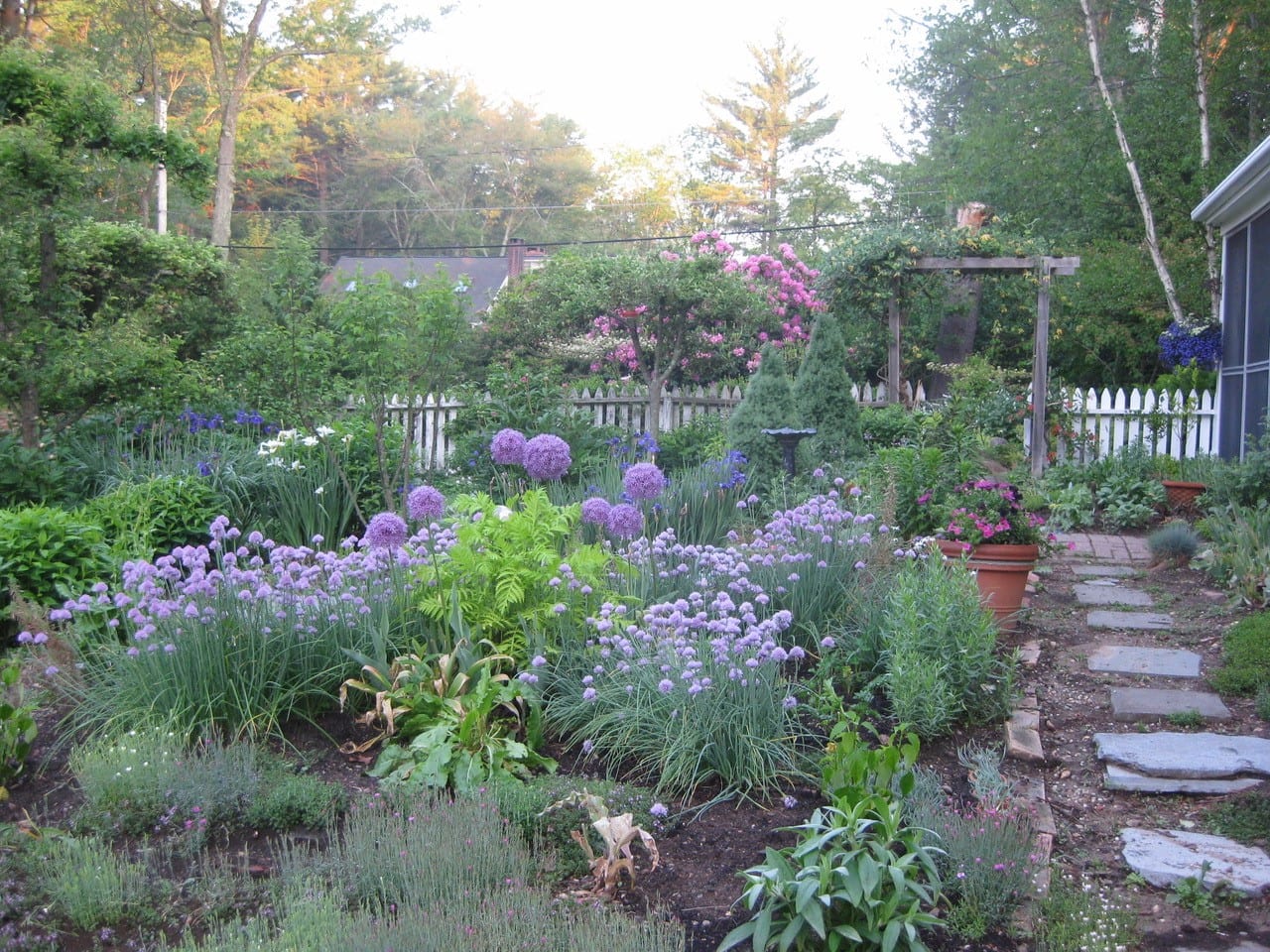
May 31 Herb Garden in late May features chives, giant alliums, golden feverfew (since removed), sorrel, and dianthus.

June 6 In early June Lonicera sempervirens borders to the front walk and is a huge hummingbird attraction.
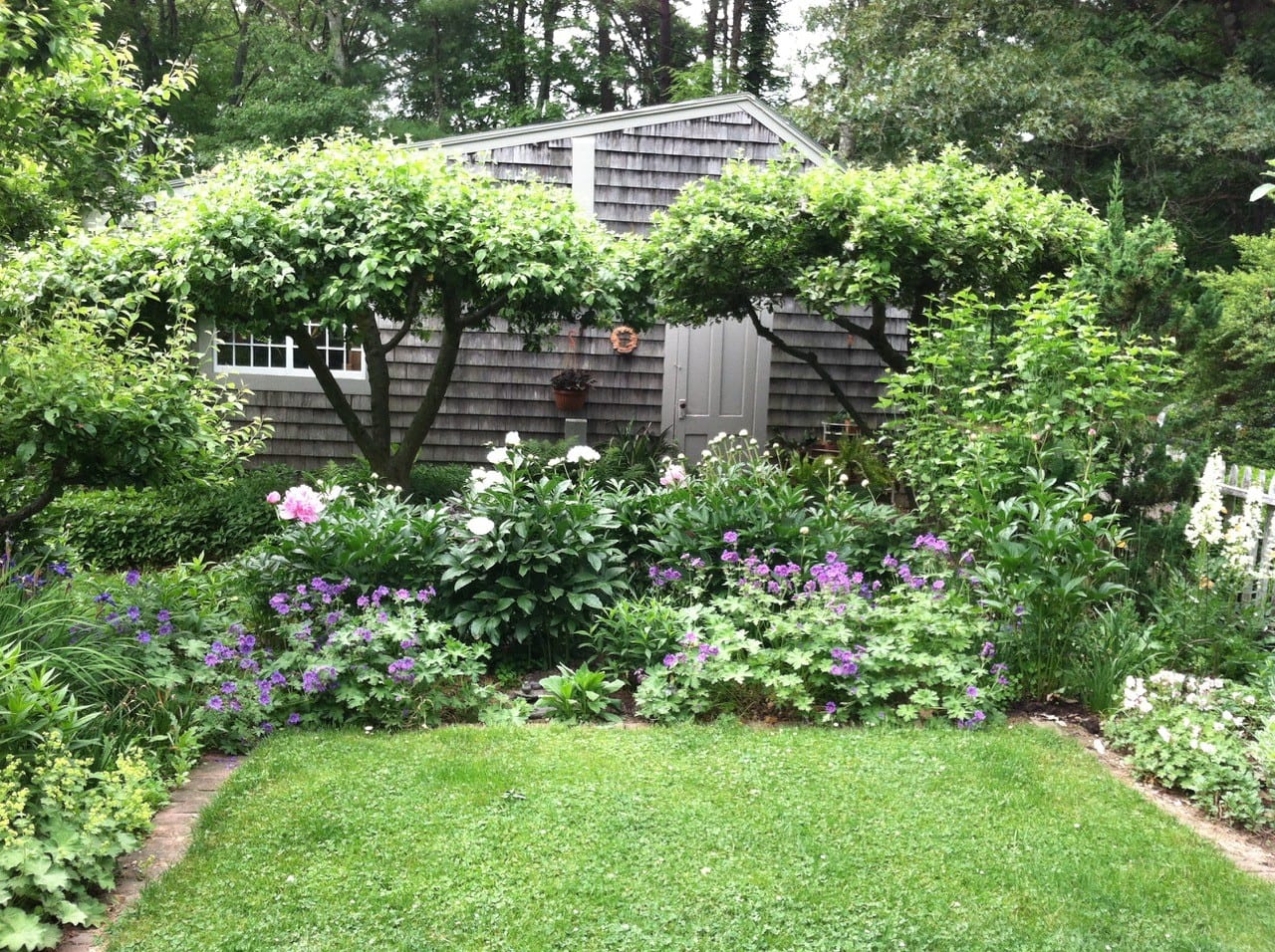
June 10 The front border includes peonies and Geranium ‘Johnson’s blue’ and apple trees: Freedom and Liberty
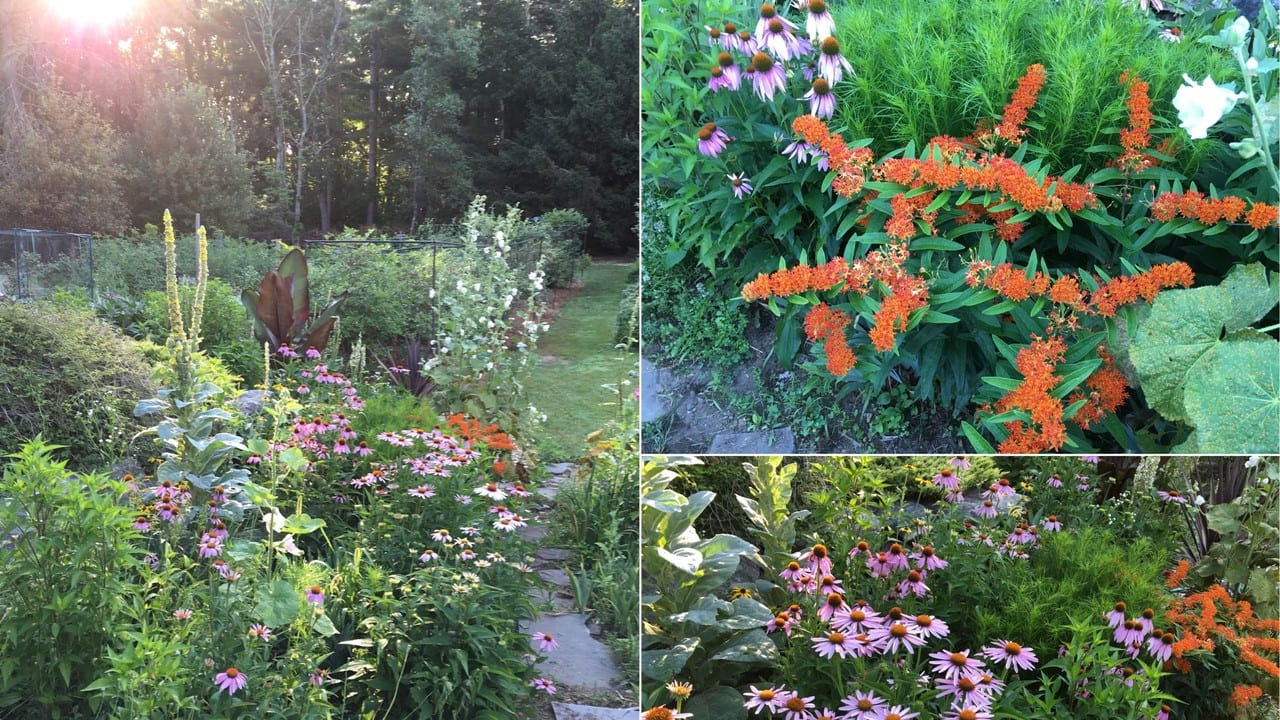
July 9 The front garden in early July features butterfly weed, echinacea, mullein, hollyhocks, and a banana, of course, in the background.
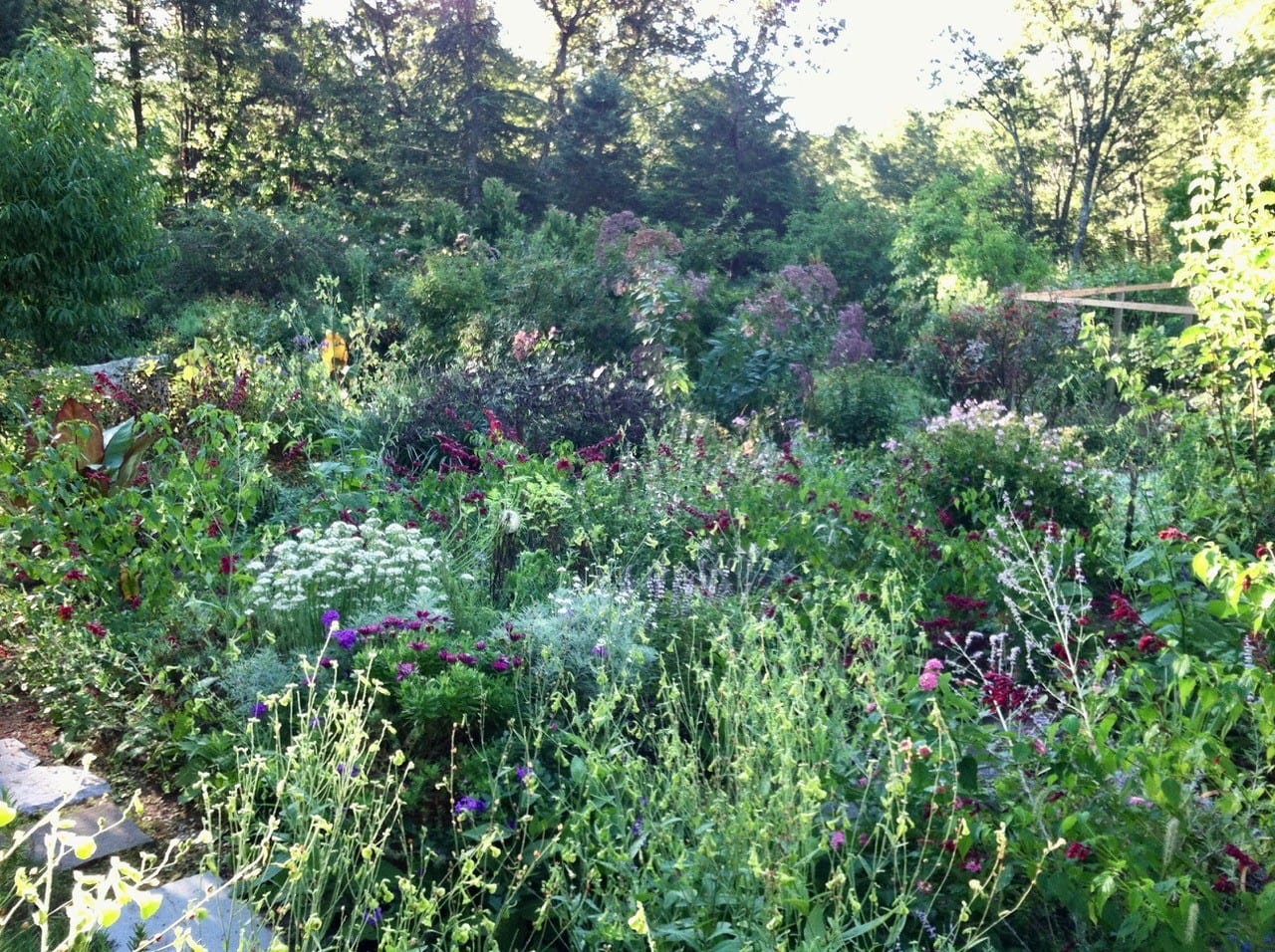
October 17 The front border is always opulent in the fall. A corner of the chicken house is visible to the right.
***
Each author appearing herein retains original copyright. Right to reproduce or disseminate all material herein, including to Columbia University Library’s CAUSEWAY Project, is otherwise reserved by ELA. Please contact ELA for permission to reprint.
Mention of products is not intended to constitute an endorsement. Opinions expressed in this newsletter article do not necessarily represent those of ELA’s directors, staff, or members.

